Stollen. One of the most famous and most controversial German Christmas treats. Many cities have their own versions and there are even organisations which watch over their stollen bakers. You can get original labels for your creations, but you have to follow all the rules. It’s a serious business. One that, here in the hometown of Dresden Christmas Stollen, includes a ton of butter and raisins. Which, by the way, not many people are fond of. I don’t mind the raisins, but I do hate succade, which is also a part of a traditional stollen. Cubes of candied lemon peel that taste bitter and ruin a stollen for me every time. Yes, you can pick them out. But that takes forever. And then of course there is butter. Which makes the famous eponym of our famous Christmas market (Striezelmarkt) a no go for me.
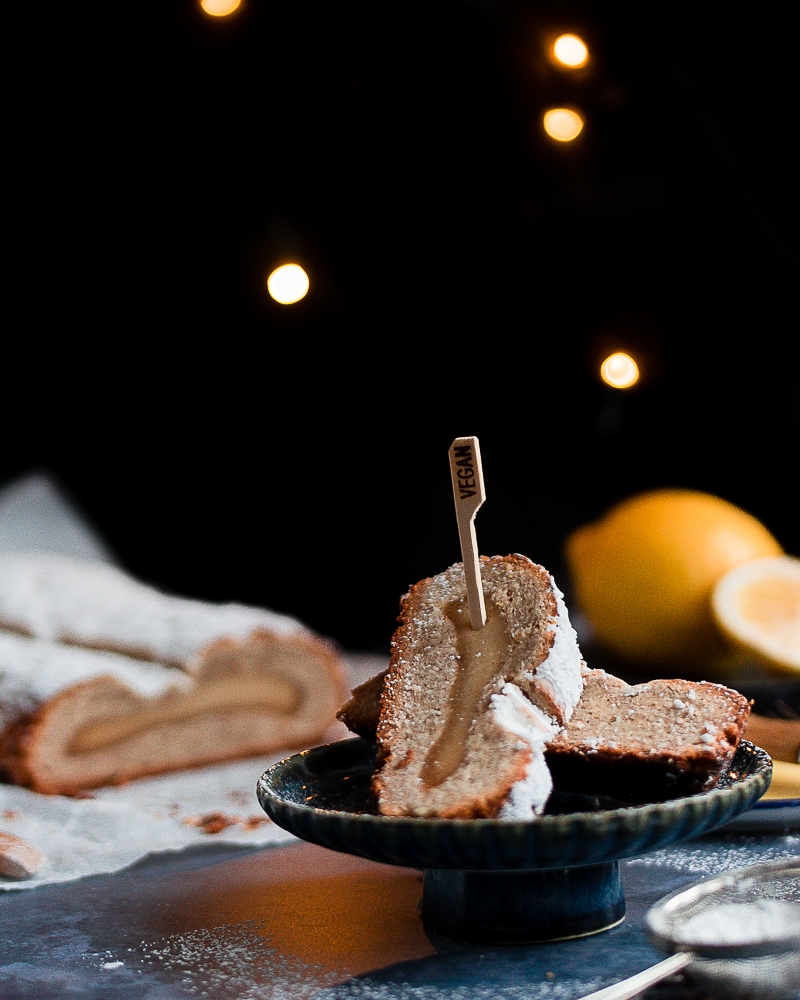
I know a lot of people who don’t really love stollen. People in my family, for example. Probably because we’re all from an area where nobody cares that much about stollen. Except for my grandmother. She used to bake a ton of stollen every year. Different versions. For all of the people in her family who either didn’t like raisins, or succade, or whatever. Unfortunately I do not have her recipes. But I am starting to adopt her behaviour. Making different kinds of stollen for different people. I once made a Mohnstriezel (poppy seed stollen, still my favourite), a tiny version, and of course I did once bake a very traditional version, too.
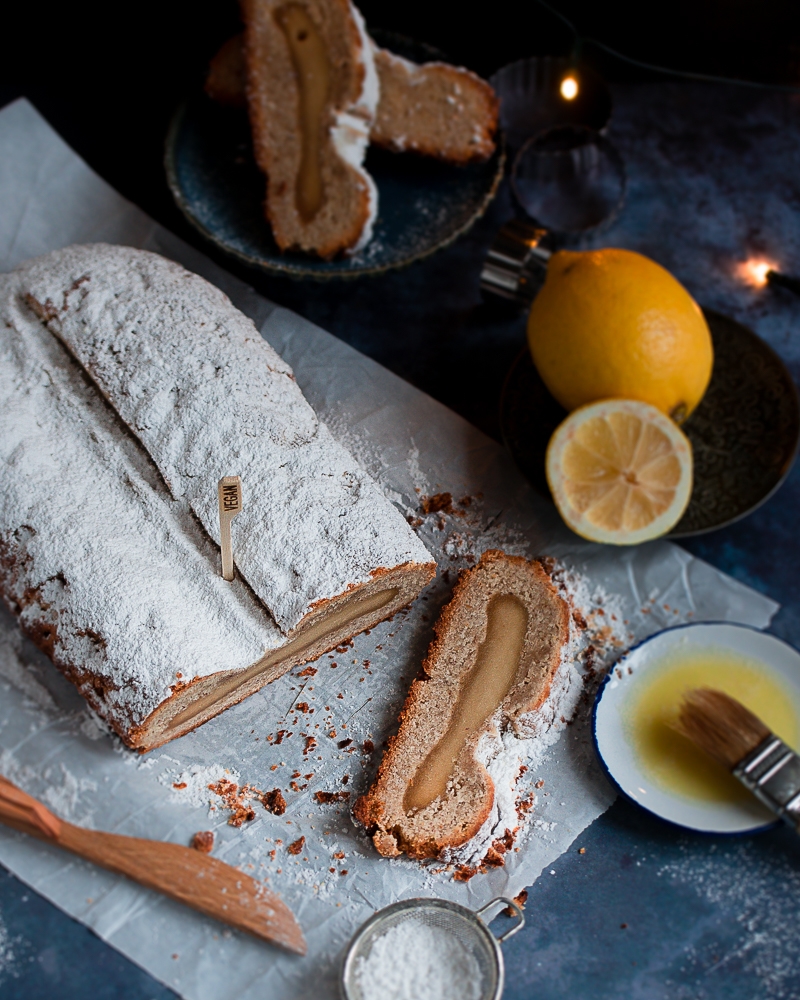
This year I am making another one of my favourites. Marzipan stollen. Of course there are different versions of this one, too. Mine comes without raisins and without candied citrus peel. It has a ton of marzipan, almonds, bitter almonds, and tonka beans instead. (Living dangerously, I think both bitter almonds and tonka beans are banned in the US. Here in Germany, you can buy them in supermarkets. No questions asked.) If you don’t have access to tonka beans, use vanilla extract instead. It’s not the same, but it’s also delicious. Instead of bitter almonds, use almond extract. I would guess that you can use a teaspoon of each.
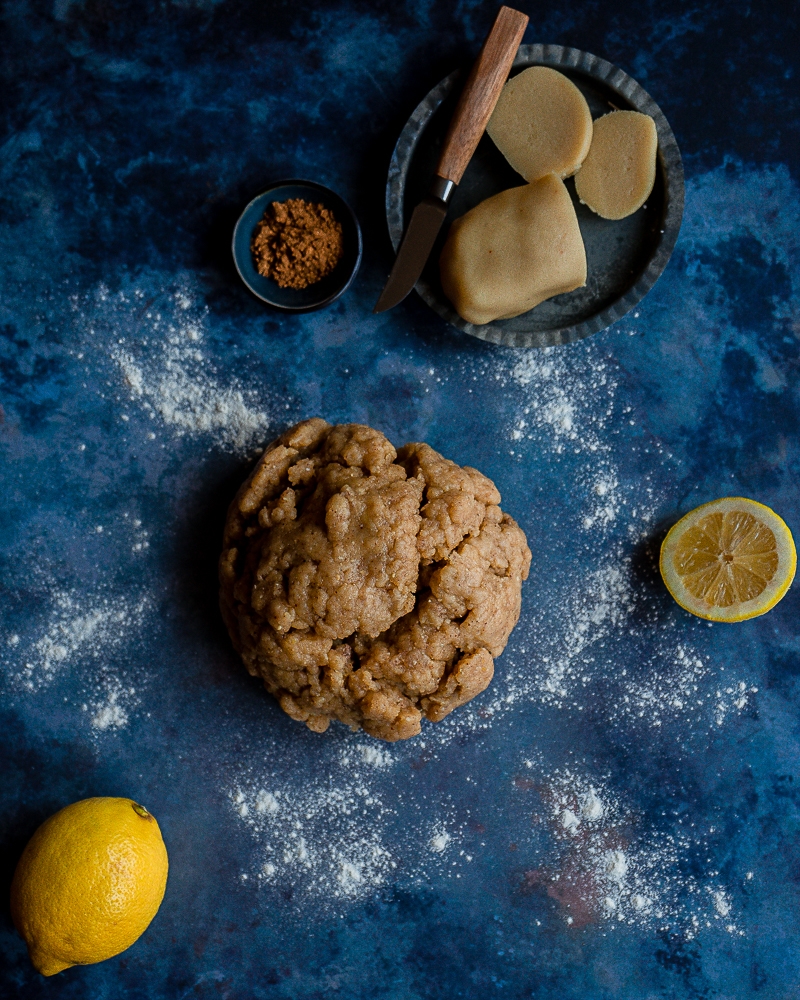
Stollen dough is a very enriched yeast dough that is made with two parts flour to one part fat. It won’t rise much but is is really great for baking in advance. It keeps forever. If you make your stollen now and wrap it airtight, you can enjoy it at Christmas. It will even keep longer when stored properly. Some people eat their last scraps of stollen by Easter.
Oh, and one more thing: Stollen spice. This is a mix of cinnamon, ground dried lemon and orange peel and other spices like cardamom, nutmeg or mace, coriander, allspice, cloves, etc. My recipe calls for two teaspoons of stollen spice. If you cannot get a hold of such a spice mix, I suggest you use the grated peel of an additional lemon, the grated peel of half an orange and a quarter teaspoon each of cinnamon, mace, allspice, and cloves. Or adjust to your taste.
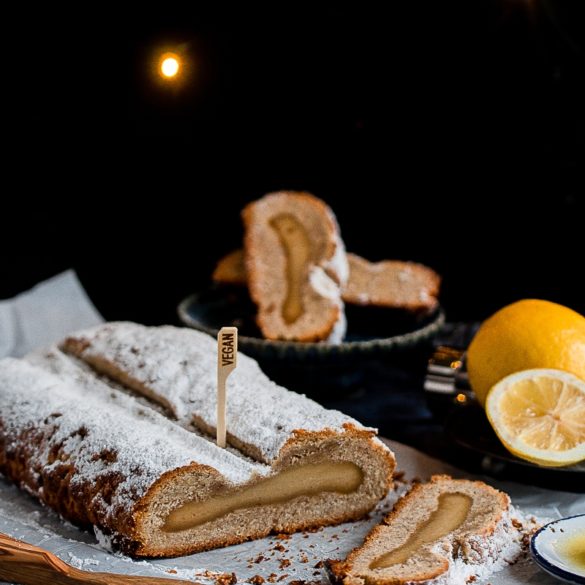
Ingredients
500 g all-purpose flour
100 g sugar
100 g ground almonds
100 ml soy milk
1 envelope (7 grams) instant yeast
250 g margarine
3 bitter almonds, ground (Grind in a small coffee mill, together with a part of the sugar) (or 1 tsp almond extract)
grated peel from one lemon
1/2 grated tonka bean (or 1 -2 teaspoons vanilla extract)
2 teaspoons stollen spice (see tip above)
1/2 teaspoon salt
400 g marzipan
100 g additional margarine for brushing
powderd sugar for dusting
Instructions
In a bowl, combine flour, sugar, and almonds.
Mix to combine.
Warm the soy milk on the stove and pour over the flour mixture.
Add yeast and let sit until frothy.
Meanwhile melt the margarine in a small pot and let cool to room temp.
Add margarine, ground bitter almonds, lemon peel, tonka bean, stollen spice, and salt to the flour mixture.
Knead the dough well. I knead by hand, for about 5 minutes.
Cover the dough and let it rest in a warm place for about 1 hour.
On a lightly floured surface, roll it into a rectangle about 33 x 26 cm. Roll the marzipan into a rectangle as well (26 x 10 cm).

It doesn't have to be exact, but you should be able to fold the dough over the marzipan.
Make sure to seal the dough and turn it around.
Now shape the stollen into a loaf that is about 26 x 12 cm and use your hand to make a trench down the length of the loaf, about a third of the way in.
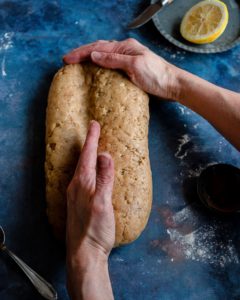

Cover the loaf and let it rest in a warm place for about 90 minutes.
Preheat the oven to 180°C.
Place the stollen on a baking sheet that is lined with a silicon mat, parchent paper, or greased well.
Transfer stollen to sheet and bake for 45 minutes.
Melt the margarine reserved for brushing.
Brush the stollen as soon as it comes out of the oven and use all of the margarine.
You will have to repeat the brushing process a couple of times. But don't worry, the stollen will soak it all up.
Leave the stollen to rest overnight. (I just left it on the kitchen counter, uncovered.)
The next day dust with a very generous amount of powdered sugar and wrap airtight.
Let rest for at least a couple of days before serving.
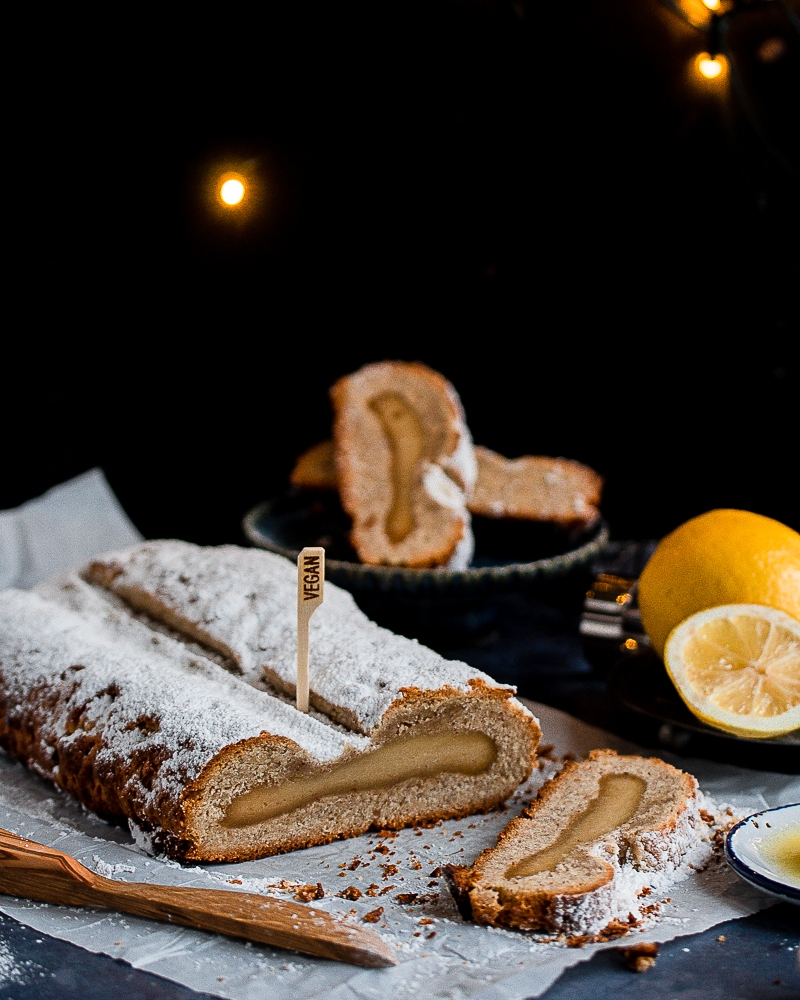
4 comments
Stollen has been on my to do list for a ridiculously long time – I wish we had such a rich stollen history as yours and some a wonderful sounding spice mix as stollen spice. One day maybe I will attempt it. MEanwhile I really enjoy reading about your stollen culture. And I hope you had a happy christmas.
I hope you had a merry Christmas, too!
I love Stollen! Thanks to Aldi, I have been able to enjoy a vegan version of this for the last few years. But I have never made my own. I work all through Christmas (except the public holidays themselves), and it is so hot here, that baking doesn’t really appeal. But I should make some in winter (a term I use loosely) to enjoy!
I cannot imagine beaking this in summer! Yay, thanks for supermarkets selling stollen.
Comments are closed.